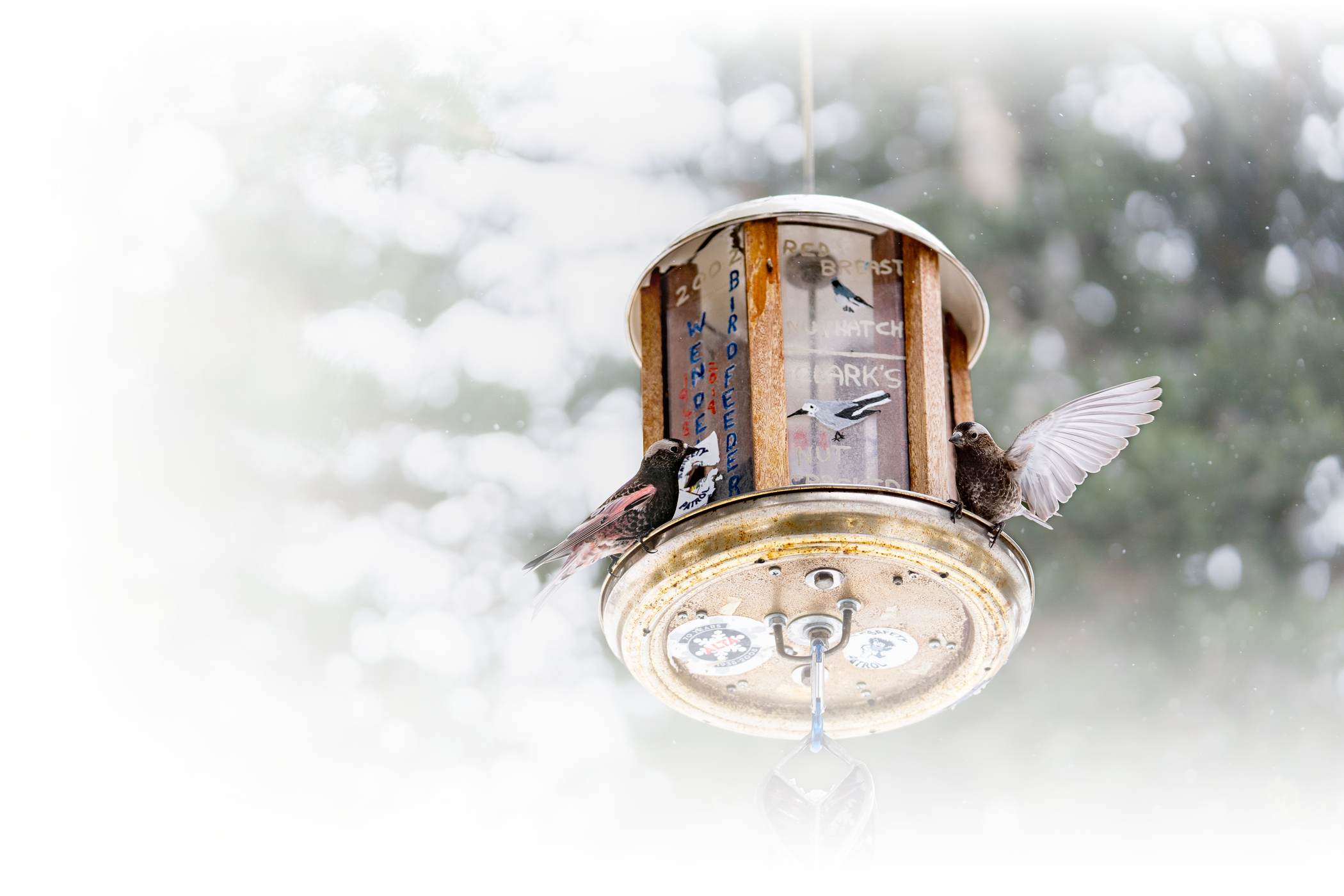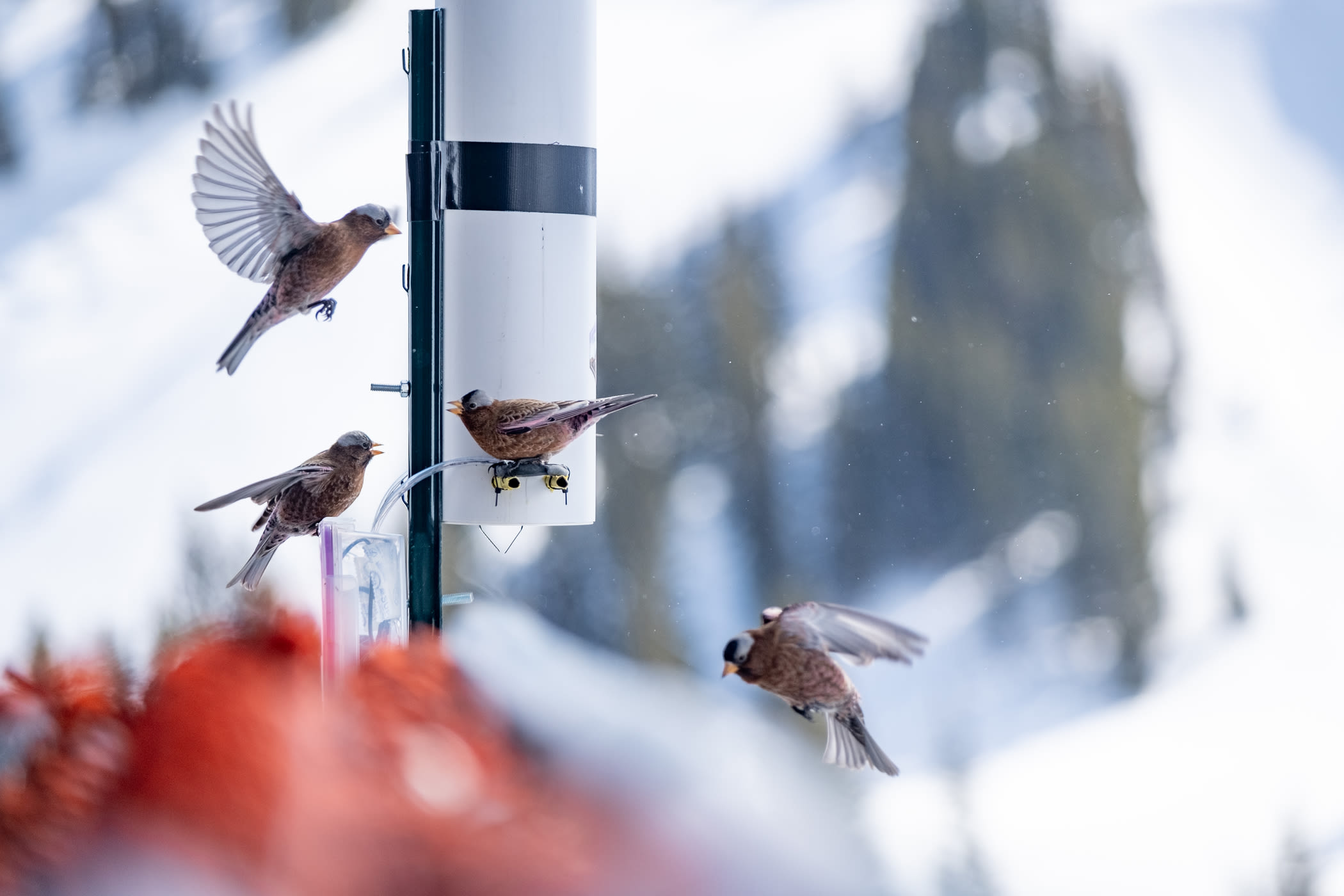The elusive Black rosy-finch that call Alta home.
Read the Rosy-Finch Project's final report >
Rosy-finches are a lot like Alta locals—they thrive in the mountains, love a good snowstorm and follow the seasons through the high country. These birds can be found year-round in states like Idaho, Montana, Nevada, Utah and Wyoming, but their migratory habits remain a mystery—making conservation efforts challenging. Luckily, Alta is one of the best places in the world to see these birds!
Rosy-Finches of Alta
Alta is home to two subspecies of the Gray-crowned rosy-finch—the Gray-crowned and Hepburn’s—and the rare Black rosy-finch. The Black rosy-finch is especially elusive and one of North America's least studied birds. Sadly, rosy-finch populations are declining due to global warming impacts on their high alpine habitats and are now considered a species of conservation concern.
Gray-Crowned Rosy-Finch
The Gray-crowned Rosy-Finch is a small bird with a mix of brown, pink and gray. They have a soft gray cap, a dark face and rosy-tinted wings and bellies.
Alta is home to two subspecies of the Gray-crowned rosy-finch:
- Gray-crowned rosy-finch: a gray crown follows the eye line.
- Hepburn's rosy-finch: a gray crown that encompasses the full cheek.
Black Rosy-Finch
The Black rosy-finch is the rarest of the rosy-finches—built for life in extreme mountain conditions. This bird is mostly black with pink highlights on the wings and belly and a slightly lighter brownish-gray cap.
The Black Rosy-Finch Project
In a recent study of the Black rosy-finch, scientists analyzed hydrogen isotopes in feathers collected from finches wintering in Utah to unlock the mystery. The Alta Environmental Center (AEC) and its partners—the Utah Division of Wildlife Resources, Tracy Aviary, Utah State University and Wild Utah Project—helped fill in the data gaps. Three RFID-enabled bird feeders were placed at the top of the Collins lift, outside the Town of Alta office and at a private home on Bypass Road. These feeders logged over 11,000 visits from 91 tagged finches, providing valuable insight into their behavior.
This study revealed that Utah’s Black Rosy-Finches likely breed in central Idaho, southwestern Montana, western Wyoming and Utah’s Uinta Mountains. On average, they migrate about 428 kilometers, shifting to lower elevations and crossing state lines with the changing seasons.
Alta’s ski community became an unexpected force for conservation. Locals and visitors alike engaged in birdwatching and citizen science, proving that recreation and environmental stewardship can go hand in hand. Thanks to this collaboration, scientists are one step closer to protecting this high-altitude traveler for future generations.
Read the final rosy-finch research report: Quantifying rosy-finch migration with stable hydrogen isotope feather markers highlights the need for inter-state collaboration to reach conservation goals >




Add Your Comment